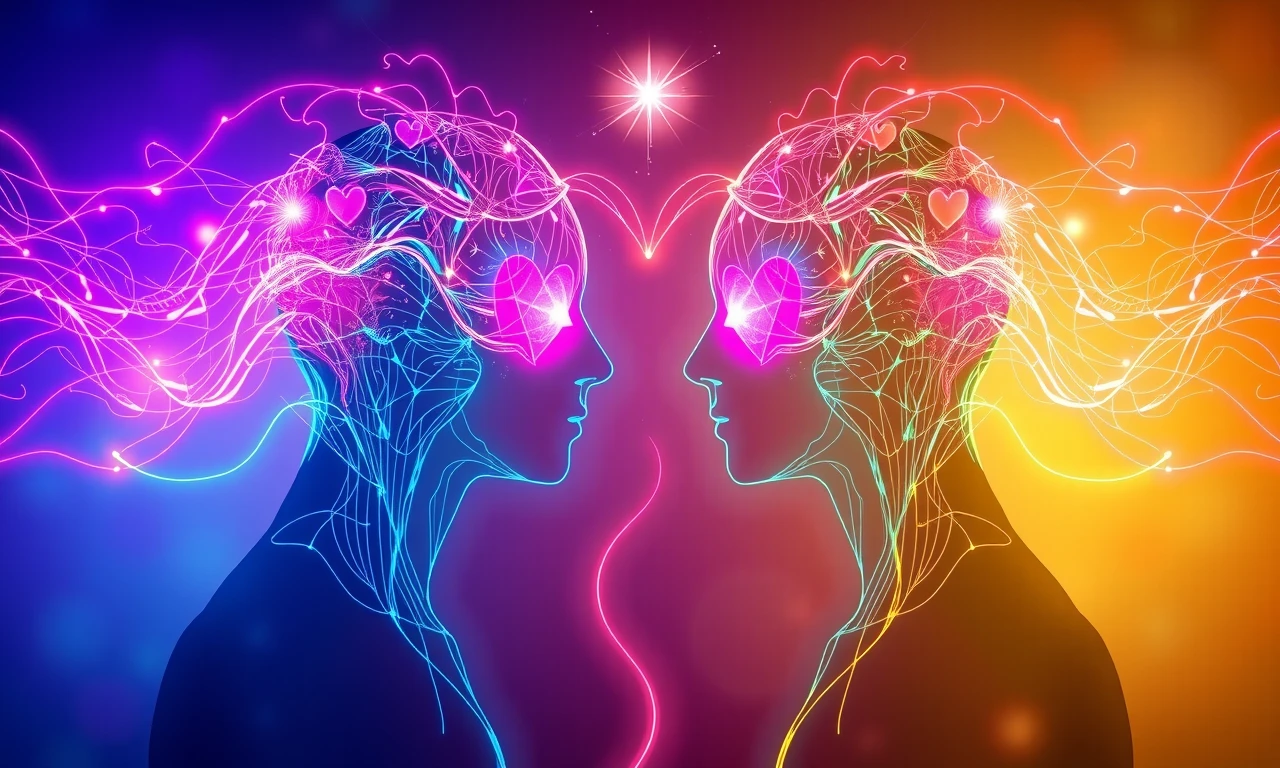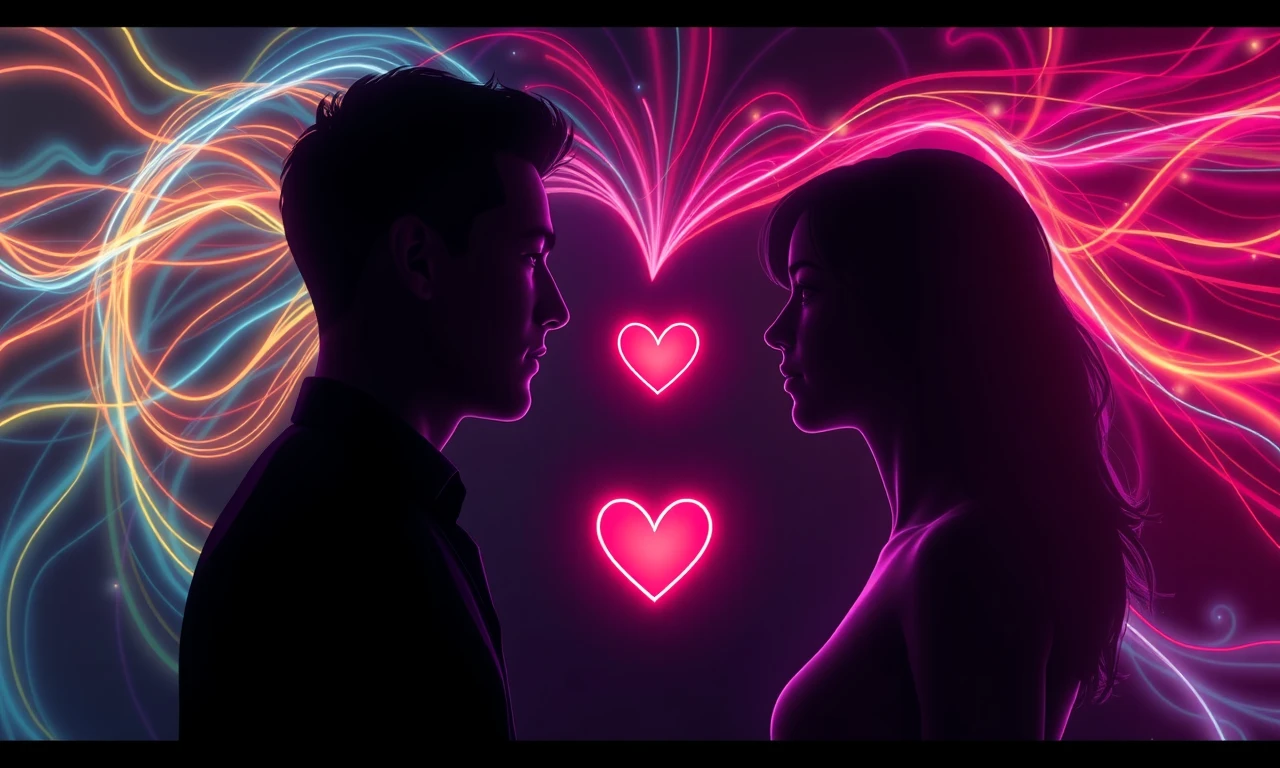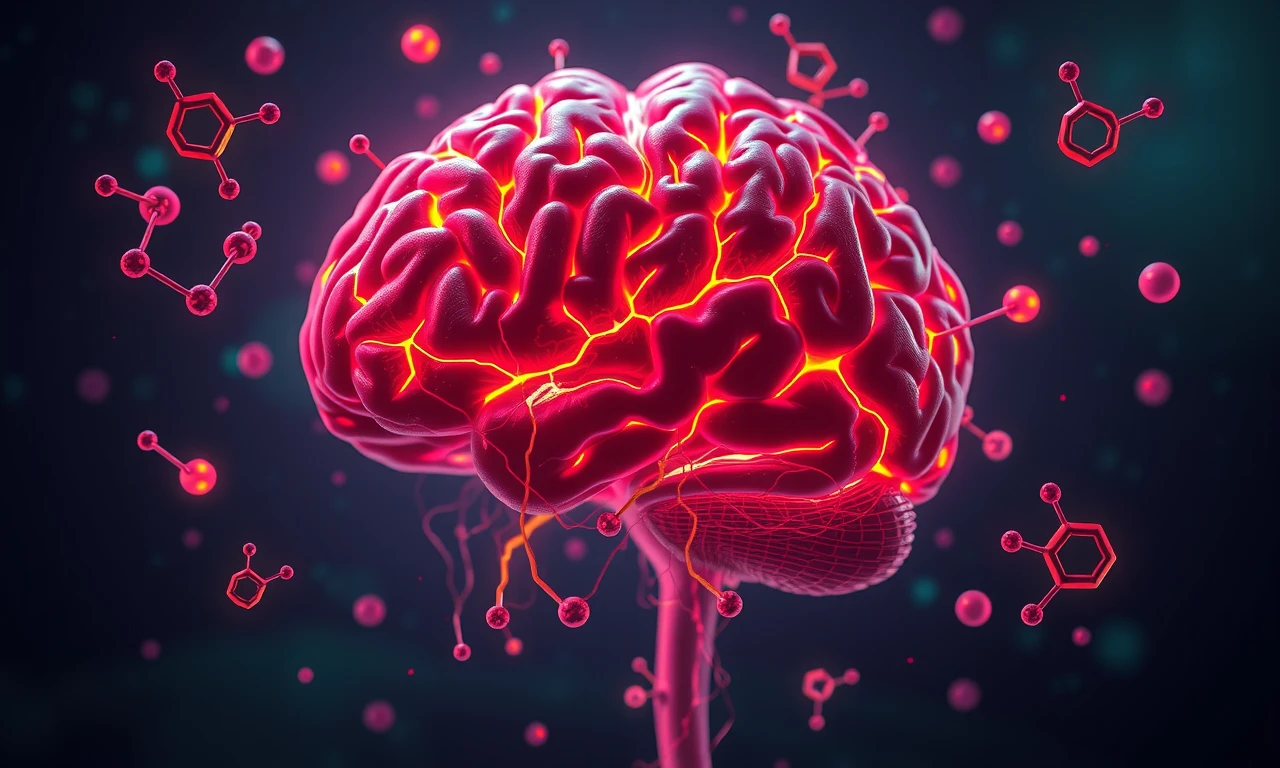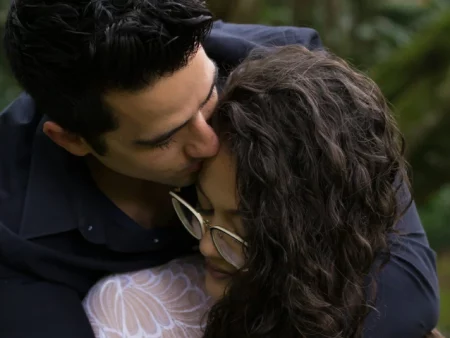In the intricate dance of human connection, a phenomenon captivates hearts and minds: the enigmatic force of reciprocal interest. This deep pull between two individuals weaves an invisible tapestry of shared emotions and unspoken understanding. As we delve into interpersonal dynamics, we notice how this magnetic vibe can transform casual encounters into profound bonds, igniting a spark that reshapes lives.
When two people meet and feel instant compatibility, their senses engage in a symphony of silent signals. This subconscious exchange of gestures and nonverbal cues creates a unique language, speaking volumes without words. In these moments, we recognize subtle yet powerful indicators of a blossoming connection, where every smile, laugh, and fleeting glance carries potential.

As we decode this chemistry, we’ll explore how mutual interest manifests, from physical to emotional realms, laying foundations for lasting relationships. By understanding these dynamics, we empower ourselves to navigate human interaction with greater awareness and appreciation.
What is Mutual Attraction?
Mutual attraction emerges when two individuals resonate on multiple levels, encompassing a profound emotional and psychological bond. This reciprocal pull blends shared interests, values, and an inexplicable sense of familiarity that draws people together.
Key aspects of this magnetic phenomenon include:
- Reciprocal Energy: Both parties reciprocate enthusiasm and engagement.
- Emotional Synchronicity: A natural alignment of feelings and wavelengths.
- Shared Chemistry: An intangible spark igniting interactions.
- Comfort in Presence: Feeling comfortable in each other’s company.
- Heightened Awareness: Increased attention to subtle cues.
This connection often catalyzes deeper relationships, fostering an environment where both feel valued. It’s a dance of give-and-take, with equal investment from each person.
A recent study suggests mutual attraction stems from self-essentialist reasoning, where people believe their core essence shapes interests and assume others share similar qualities. This explains why we’re often attracted to those mirroring our values.
As connections deepen, they evolve into foundations of trust, affection, and genuine care. Partners appreciate and admire each other’s qualities, fostering a supportive environment. They eagerly share thoughts, dreams, and vulnerabilities.
Recognizing signs of mutual attraction empowers individuals to nurture meaningful connections and enjoy rich human interaction. When two people truly respond to each other’s essence, they can make magic happen.
Recognizing the Signs of Mutual Attraction
Decoding the intricate tapestry of human connections reveals fascinating signs that hint at a deeper bond. As we embark on this exploration, we’ll uncover the subtle cues and overt behaviors that signal reciprocal desire. From fleeting glances to shared laughter, these indicators paint a vivid picture of burgeoning affinity.
Our journey delves into three key realms: nonverbal communication, verbal exchanges, and behavioral patterns. Each domain offers unique insights into the dance of mutual allure. By honing our ability to recognize these signs, we empower ourselves to navigate social interactions with greater awareness and confidence.
A recent study suggests that understanding these cues can significantly enhance our relationship prospects. Whether it’s deciphering the meaning behind prolonged eye-contact or learning to acknowledge shared interests, this knowledge proves invaluable in fostering meaningful connections. Developing this skill can help individuals attract and cultivate more fulfilling partnerships.
Nonverbal Cues: The Silent Language of Attraction
In the intricate tapestry of human interaction, nonverbal cues weave a silent yet powerful narrative of attraction. These wordless exchanges often speak volumes, revealing depths of connection that transcend verbal communication. As we delve into this fascinating realm, we uncover a rich array of subtle signs that hint at mutual intrigue.

At the forefront of these indicators lies the captivating dance of eye contact. When two individuals share a moment of prolonged gaze, it often signifies a deeper level of engagement and curiosity. This visual connection can create a heightened sense of intimacy, fostering a unique bond between the parties involved.
Body language serves as another crucial element in this nonverbal symphony. Subtle shifts in posture, such as leaning towards one another or mirroring each other’s movements, can indicate a subconscious alignment of interest. These physical cues often occur involuntarily, revealing genuine intrigue beyond conscious control.
- Gravitational pull: An inexplicable urge to decrease physical distance
- Open body posture: Uncrossed arms and relaxed shoulders signaling receptiveness
- Heightened awareness: Increased attentiveness to the other’s presence and actions
- Subtle touches: Brief, seemingly accidental physical contact during interaction
- Synchronized movements: Unconscious mimicry of gestures and expressions
- Dilated pupils: A physiological response to heightened interest
- Increased heart rate: A subtle yet powerful indicator of excitement
A recent study in the field of behavioral psychology highlighted the significance of these nonverbal cues in forming initial impressions. Researchers found that individuals who displayed positive body language were perceived as more approachable and attractive, regardless of verbal content.
As we navigate the complex landscape of human connections, honing our ability to recognize and interpret these silent signals can greatly enhance our social interactions. By attuning ourselves to the nuances of nonverbal communication, we open doors to deeper understanding and more meaningful relationships.
Behavioral Patterns Signaling Mutual Interest
Behavioral patterns often serve as silent messengers of reciprocal interest between two individuals. One of the most telling signs is an increased desire to spend quality time together. This manifests in various ways, from seeking out opportunities for one-on-one interactions to prioritizing each other’s company in group settings.
Regular communication emerges as another key indicator of mutual allure. In today’s digital age, this extends beyond face-to-face interactions to include frequent text messages, phone calls, and social media engagement. The consistency and depth of these exchanges reflect a shared eagerness to maintain connection, even when physically apart.
| Mutual Attraction | One-Sided Interest |
|---|---|
| Balanced initiation of contact | Uneven communication efforts |
| Shared future planning | Vague responses to future plans |
| Equal enthusiasm in conversations | One-sided excitement |
| Reciprocal body language | Unmatched physical cues |
| Mutual prioritization of time | Imbalanced availability |
| Consistent emotional investment | Fluctuating levels of engagement |
| Shared inside jokes and references | Limited shared experiences |
A compelling aspect of mutual attraction is the tendency to include each other in future plans. This ranges from casual mentions of upcoming events to more serious discussions about long-term aspirations. Such behavior indicates a desire to intertwine life paths and grow together.
Interestingly, a recent study revealed that couples exhibiting these behavioral patterns reported higher relationship satisfaction and longevity. This underscores the significance of recognizing and nurturing these subtle yet powerful indicators of reciprocal interest in fostering meaningful connections.
Another crucial behavioral pattern is the willingness to be vulnerable with each other. This might involve sharing personal stories, fears, or dreams, creating a deeper emotional bond. Couples experiencing mutual attraction often find themselves naturally opening up, feeling safe and understood in each other’s presence.
Additionally, mutual support during challenging times serves as a strong indicator of reciprocal interest. When both individuals consistently show up for each other, offering encouragement and assistance, it demonstrates a genuine investment in the relationship’s well-being.
The Science Behind Mutual Attraction
The intricate dance of mutual allure unfolds through a fascinating interplay of neurochemistry and psychological processes. At its core, the brain’s reward system orchestrates a symphony of neurotransmitters, creating a potent cocktail of emotions and sensations.
Dopamine, often dubbed the “feel-good” hormone, surges when we encounter someone who attracts us. This neurochemical flood ignites a sense of euphoria and motivation, driving us to seek further interaction. Simultaneously, norepinephrine heightens alertness and excitement, sharpening our focus on the object of our affection.

Serotonin levels fluctuate during the early stages of attraction, potentially contributing to the obsessive thoughts and behaviors associated with infatuation. As the connection deepens, oxytocin – the “bonding hormone” – fosters feelings of trust and attachment.
A recent study revealed that individuals experiencing mutual attraction exhibit synchronized brain activity in regions associated with social cognition and emotional processing. This neural synchronization may explain the sense of “being on the same wavelength” often reported by couples.
Evolutionarily, these mechanisms served to promote pair bonding and reproduction. However, in our complex modern world, they continue to play a crucial role in forging meaningful connections.
Intriguingly, the brain’s response to mutual attraction bears striking similarities to addictive behaviors, explaining the intense craving for a partner’s presence. This neurological parallel underscores the powerful impact of reciprocal interest on our cognitive and emotional states.
Recognizing these scientific underpinnings can enhance our understanding of the intangible “chemistry” between two people, offering valuable insights into the enigmatic nature of human connections. By delving into the neuroscience behind attraction, we uncover the biological signs that illuminate the path to meaningful relationships.
Cultivating and Nurturing Mutual Attraction
Fostering mutual attraction requires intentional effort and mindfulness. Here are key strategies to cultivate and sustain reciprocal interest:
- Prioritize open communication: Share thoughts, dreams, and vulnerabilities to deepen emotional intimacy
- Practice active listening: Demonstrate genuine interest by engaging fully in conversations
- Maintain individual identities: Pursue personal passions to remain interesting and attractive
- Embrace spontaneity: Surprise your partner with unexpected gestures or adventures
- Cultivate shared experiences: Create new memories through joint activities and explorations
- Express appreciation: Regularly acknowledge your partner’s positive qualities and actions
- Prioritize physical affection: Maintain non-sexual touch to reinforce emotional connection
- Invest in self-care: Nurture your own well-being to bring your best self to the relationship
- Practice empathy: Strive to understand your partner’s perspective, even during disagreements
- Plan for the future together: Discuss and align on long-term goals and aspirations
- Foster growth: Encourage each other’s personal and professional development
- Practice gratitude: Regularly express thankfulness for your partner’s presence in your life
- Maintain curiosity: Continue to learn about each other, even in long-term relationships
- Respect boundaries: Honor individual needs and personal space
- Celebrate milestones: Acknowledge and commemorate important moments together
A recent study revealed that couples who regularly engage in shared goal-setting report higher levels of relationship satisfaction. This underscores the importance of future planning in maintaining mutual attraction. Another research finding suggests that couples who practice gratitude experience increased relationship satisfaction and commitment.
Remember, nurturing attraction is an ongoing process. By consistently implementing these strategies, you create an environment where reciprocal interest can flourish. Pay attention to subtle signs of your partner’s needs and adapt your approach accordingly. Embracing growth, both individually and as a couple, keeps the spark alive and fosters a deep, lasting connection. It’s essential to view relationship maintenance as a shared responsibility, with both partners actively contributing to the bond’s strength and vitality.
The Role of Mutual Attraction in Long-term Relationships
Mutual attraction forms the foundation of enduring partnerships, igniting and sustaining long-term relationships. This reciprocal pull transcends physical allure, encompassing emotional resonance and shared values that foster deep connections. As couples navigate life together, this magnetic force reinforces their bond through triumphs and challenges.
Couples maintaining strong mutual attraction report higher relationship satisfaction and longevity. This ongoing allure manifests in consistent affection and genuine curiosity about each other’s thoughts and experiences, keeping the relationship dynamic and engaging over time.
Mutual attraction weaves two lives together, creating a tapestry of shared experiences and emotional intimacy that grows richer with time. For example, a couple celebrating their 25th anniversary might reflect on how their initial spark has evolved into a deep, multifaceted connection.
Future planning plays a crucial role in sustaining attraction. Couples who include each other in their visions for the future demonstrate commitment to growth and shared aspirations. This forward-thinking approach creates unity and purpose, strengthening their connection.
A recent study showed that couples discussing future goals regularly exhibit higher relationship stability. This practice fosters shared identity and signals mutual investment in the relationship’s longevity. By envisioning a future together, partners reinforce their commitment.
Recognizing subtle signs of ongoing attraction is vital for relationship maintenance. These indicators evolve from initial passionate displays to nuanced expressions of care. By remaining attuned to these changing dynamics, couples can nurture their connection, ensuring its continued vibrancy throughout the years.
Frequently Asked Questions About Mutual Attraction
Can mutual attraction fade over time in a relationship?
Yes, mutual attraction can fade over time in relationships as partners become familiar. However, a recent study suggests couples actively nurturing their connection can reignite the spark. Recognizing early signs of waning attraction allows partners to address issues proactively, maintaining a vibrant bond. Regular date nights and shared experiences can help sustain attraction.
Is it possible to create mutual attraction if it's not there initially?
While initial attraction can't be forced, cultivating mutual interest is possible through shared experiences and open communication. A recent study suggests proximity often leads to increased liking. Paying attention to subtle signs of compatibility and investing genuine effort can nurture potential connections over time, fostering a deeper bond between individuals.
How does mutual attraction differ from infatuation?
Mutual attraction cultivates deep emotional bonds over time, while infatuation often involves intense but fleeting feelings based on idealization. A recent study indicates mutual attraction tends to be more stable and enduring. Recognizing subtle signs helps differentiate between lasting connections and temporary fascinations, fostering healthier relationships.
Can mutual attraction exist in long-distance relationships?
Yes, mutual attraction can flourish in long-distance relationships. Couples foster emotional intimacy through consistent communication and shared experiences. A recent study reveals long-distance partners often report deeper connections due to focused quality time. Recognizing subtle signs of commitment and effort maintains the bond across miles, creating lasting connections despite physical separation.

Jeffrey Young is an American psychologist renowned for developing schema therapy. He founded the Schema Therapy Institute and is a leader in the field of cognitive behavioral therapy. Young has authored several influential books, including Schema Therapy for professionals and Reinventing Your Life for the general public.







